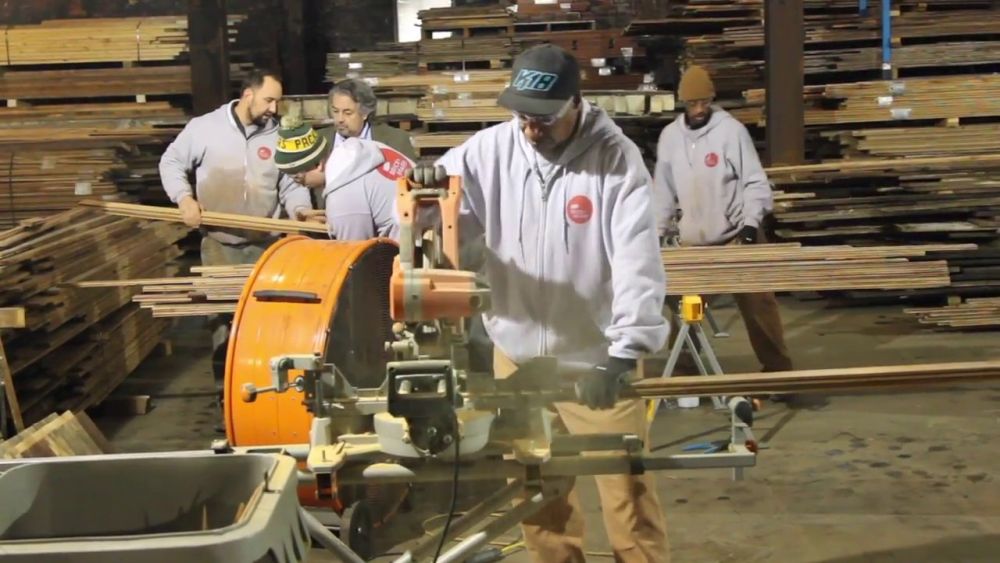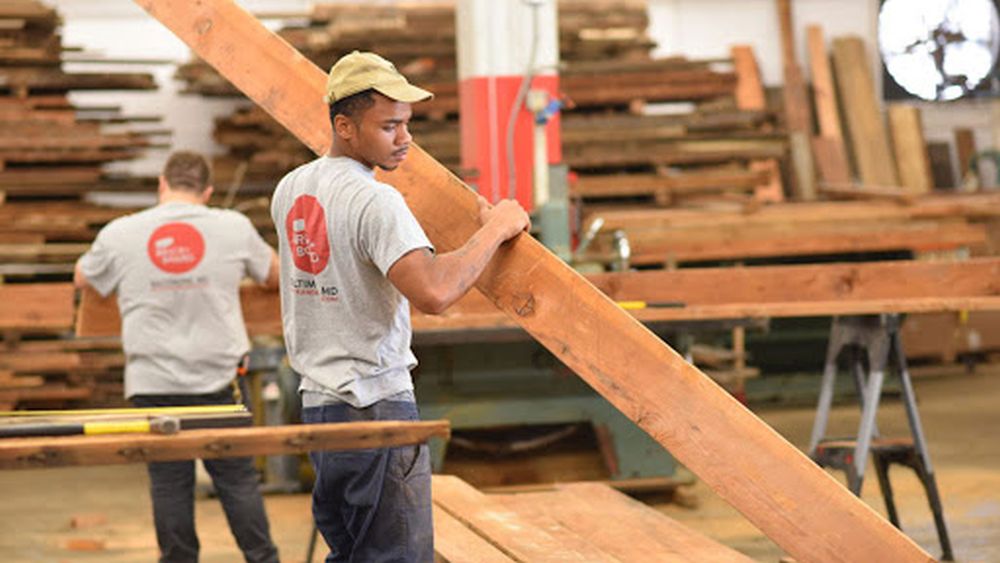Baltimore Wood Project Recycles Wood Waste into Beautiful Furniture
The Baltimore Wood Project is an initiative by US Forest Service that recycles wood waste from old buildings to create a circular economy. This initiative in the US city of Baltimore has collaborated with a few partners to repurpose urban wood waste of the city. The project looks out to build a regional economy – rooted to repurpose the wood and reclaim the livelihood of neighbor urban and rural areas.
The Baltimore Wood Project is a joint venture, established by US Forest Service with local non-profits and the city, indicating how the discarded wood from buildings can end up in landfills. The pilot initiative salvages wood from abandoned buildings, repurposes it, and resells it locally to create a circular economy with social, environmental, and economic benefits.
Wood holds more than 10% of the total waste in the US and is only growing. According to the US Forest Service, more wooden residues and tree wastes are generated from the urban regions. Wood waste releases carbon dioxide and methane while rotting. Even though the waste wood has a low sale value, the old buildings can be a precious resource.
Baltimore’s old houses were made from yellow pine that came from old-grown forests. It is denser and rot-resistant than the new lumber, and centuries of oxidation have given the wood an attractive dark patina.

The project is an initiative by US Forest Service recycling wood waste from old buildings to create a circular economy | Image: Baltimore Wood Project
The wood is salvaged from the deconstruction of the buildings and is diverted from the city’s waste stream. The collected wood is also sourced from other waste facilities and space-limited landfills. A local facility is set up to sort and process the salvaged wood – which is repurposed to generate a closed-loop system, and thereafter is used for building construction, furniture, and other uses.
In addition to the environmental advantages, this initiative has economic and social benefits. Baltimore has an unemployment rate of 8.5% with a population of 600,000, compared to the average of 6.2%. The Baltimore Wood Project tackles the problem by focusing on deconstruction rather than demolition – creating nearly six to eight more jobs for people.

Recycling of woods from abandoned wooden homes in Baltimore | Image: The Baltimore Project
The craftsmen and interior designers play a significant role to design items from the joist and plank-shaped pieces of wooden waste with saw marks and nail holes. This venture also states that it trains formerly unemployed people of Baltimore, many of whom were former prisoners to deconstruct and salvage wood from old houses.
The project has helped achieve a sustainable future and serves as a robust model of the circular economy by self-reinforcement in urban areas. More such initiatives of utilizing salvaged wood to repurpose it for various uses can help reduce deforestation.
